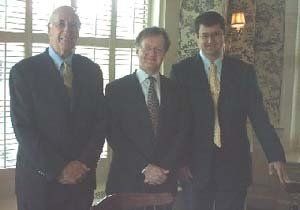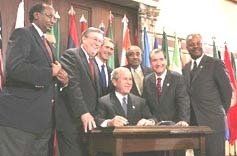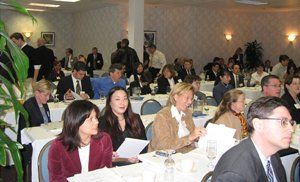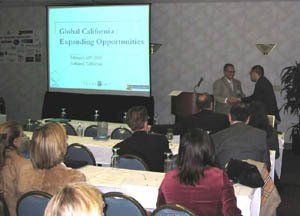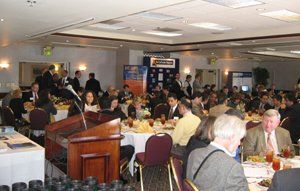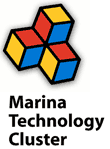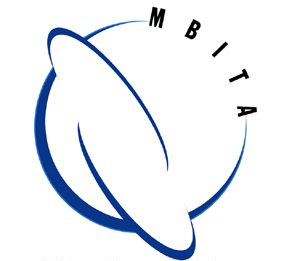Over MBITA’s 20 year history we have hosted over 35 interns from all parts of the world. We find their internship is as educational to us as it is to them. These young men and woman have moved on to successful careers in international business and we hear from them periodically, and in some cases they have helped us with our trade promotion services in the company or country where they currently work. This issue of World TradeWinds features articles from two of our current interns who will soon move on to the challenges of their professional careers. Enjoy!
UPDATE
New Paragraph
President
Tony Livoti
MBITA
Vice President
Shay Adams
AIM Medical Sales
Members:
Dr. Edward Valeau
Hartnell College
Salinas
Marcelo Siero
IdeasSiero
Jim Faith
TradePort.org
Staff:
Cristina Polesel
General Manager
Emi Hirano
Marketing Assistant
Tomoko Takamura
Marketing Assistant
Lidia Thompson
Eastern European Consultant
This newsletter has been created by MBITA's editor
Cristina Polesel
cristina@mbita.org
MBITA New Corporate Sponsor
Webmorpheus Technologies, Inc.
Ektron and Webmorpheus Working Together to Offer Customers A Complete Web Solution
The emergence of online global logistics and supply chain solutions for Fortune 1000 companies have dictated new solutions for effective and efficient global trade. Small to mid-sized enterprises (SMEs) are now benefiting from these technological developments in their global trade operations. SME web-based solutions have emerged to interact as suppliers to larger multi-national enterprises, conduct more efficient methods for bi-lateral trade with other foreign SMEs while maintaining more efficient management methods for their own content and operations. Additionally, the localization of U.S. enterprise websites in foreign countries is rapidly becoming standard practice for any company's foreign market strategy.
MBITA welcomes its new corporate sponsor, Webmorpheus Technologies, Inc. which is located in Monterey, Ca., and is a Web development firm that specializes in creating user-centric Web-based initiatives designed to deliver a more enriched user experience. By combining dynamic technology skills, with blue-chip design, usability, accessibility and a unique business management process, Webmorpheus is able to deliver results-driven solutions including Web sites, intranets, Content Management Systems (CMS), portals and extranets.
Content Management is central to many of Webmorpheus' solutions and, following extensive research, Webmorpheus chose Ektron to be their primary Content Management platform for Web and intranet projects. Ektron provides software solutions that streamline business and publishing processes and allow anyone to author, manage and publish HTML and XML content for Web sites, intranets and Web applications. Their browser-based solutions are used in more than 13,000 integrations.
Ektron Supports Rapid and Efficient Globalization Strategies on the Web
--Powerful new tools in Ektron's CMS300 and CMS400.NET enable content managers to better handle end-to-end site translation and localization processes - (Please see link below)
ektron.com/corporate.aspx?id=1948&fragment=0&SearchType=AND&terms=globalization
Webmorpheus delivers consulting services to effectively implement the Ektron CMS, from installation and configuration to the design and launch of the project, to on-going support. Webmorpheus provides Ektron content management solutions as a Web-based service (software as a service) and priced as a subscription model (pay as you go), which makes it easy to implement and use.
Ektron CMS customers are provided with training and consulting programs that provide the optimum foundation for maximizing the business tools available within the system. Business users, both technical and non-technical are guided with hands on experience under the auspices of Webmorpheus expert staff. As business needs and the flow of communication are dynamic waves of progression, requirements for on-going support are made available by Webmorpheus.
CMS Applications include:
- Integrated Document Management - New!
- Empower non-technical contributors
- Make information more searchable
- Publish multilingual Web content *Convert your website in multi-languages
- Develop sites and applications quickly
Special discount to MBITA members:
Webmorpheus as a new corporate sponsor is currently offering to install the Ektron CMS into your company's website and reduce the cost of Licensing by 50%, and in some cases eliminate the Licensing fees completely. Please call for details.
Sign up for online demo!
Contact
Reyno Gallery
Webmorpheus Technologies
Monterey, CA 93940
Tel. 831 644-9691 - Fax: 1-831-644-9692
Web: www.webmorpheus.com
e-mail: rgallery@webmorpheus.com
MBITA Hosts Humphrey Fellows Delegation from Eleven Developing Countries
by Monica Figa, MBITA Intern
On Monday, February 21st, MBITA welcomed eleven Hubert H. Humphrey Fellowship Scholars currently studying at the Michigan State University. Tony Livoti, President of MBITA, held a presentation for the fellows at the Monterey Institute for International Studies on the growing importance of e-business in the international economy.
Today the Food theme park Industry has become very successful in Japan. Entertainment parks like "Curry Museum", "Ramen (Noodle) Museum", "Ice Cream City", "Sweets Forest" are thriving. The success of these ventures is not just eating the food but to learn the history of these foods. Perhaps, the emergence of 'California cuisine' in restaurants throughout California might be successful in Japan?
The opening of Universal Studio Japan in 2001 began with the 'cutting of the ribbon' by a famous international celebrity, Arnold Schwarzenegger. California has a great opportunity now to further promote the 'California Brand' in Japan under the leadership of 'Shuwa-chan'.
Click here for Tomoko Takamura's resume.
Marisa del Pozo
Executive Program Director
Tel: 011-34-639-22 06 35
Web: www.servicomspain-usa.com
e-mail: marisadelpozo@servicomspain-usa.com
For more information on AGOA, visit: www.agoa.gov, www.tradewatch.org, www.watradehub.com and www.export.gov
1. African Growth and Opportunity Act. <www.agoa.gov>
2. Export.Gov. US Department of Commerce 2001. <www.export.gov>
3. West African Trade Hub. Carana Corp. 2003-2004. <www.watradehub.com>
4. Global Trade Watch. Public Citizen 2005. <www.tradewatch.org>
- Howard Shatz, Public Policy Institute of California
- Ingrid Rosten, International Trade Consultant
- Linda Kotzot, German-American Business Association
- Jeremy Potash, California-Asia Business Council.
Panel Two, Issues and Challenges Facing California's Transportation Infrastructure, moderated by Sean Randolph, Bay Area Economic Forum, featured:
- John McLaurin, Pacific Maritime Association
- Jon Haveman, Public Policy Institute of California
- Tom Teofilo, Port of Long Beach
- Jock O'Connell, The ClarkStreet Group
Panel Three, Security and Trade in a Post-9/11 World, moderated by Don Masters, Homeland Security Industries Association, featured:
- Beth Peterson, Beth Peterson Enterprises
- Bruce Aitken, Homeland Security Industries Association
- Jerry Bridges, Port of Oakland
- Bruce Berton, Stonefield & Josephson Inc.
Panel Four, Marketing the California Brand and Sacramento's New Role in Trade Promotion, moderated by Janice Cooper, California Pacific Resources, Inc., featured:
- Jose Duenas, Bay Area World Trade Center
- Mark Mosher, California Jobs Commission
- Mary Delmege, U.S. Commercial Service
- Jeffery Gersick, Gersick Associates
Panel Five, Forging Strategic Alliances, moderated by Michael Liikala, U.S. Commercial Service, featured:
- Richard Soyombo, Centers for International Trade Development
- Moises Cisneros, Los Angeles Area Chamber of Commerce
- Bruce Ackerman, Economic Alliance of the San Fernando Valley
- Roderic O. Ballance, Global Trade Center of the Inland Empire
Really Useful Sites for International Trade Professionals is recognized worldwide as a valuable source of information for international professionals worldwide. The bi-weekly newsletter pinpoints international trade-related resources on the Web that subscribers can use in their daily business (and personal) lives. Subscribers in more than 30 countries depend on the newsletter to stay up to date in their work and business development.
One subscriber says "Of all the newsletters and magazines that I receive - both email and paper - yours is the one that is the most useful, the first one I route to others regularly and the only one I take home from work."
Really Useful Sites for International Trade Professionals is free and new subscribers can sign up at fita.org/usefulregister.html.
Sponsors, Partners, & Affiliates






















